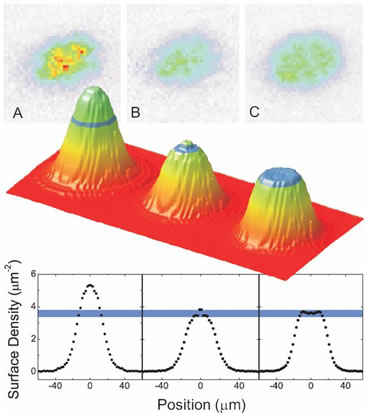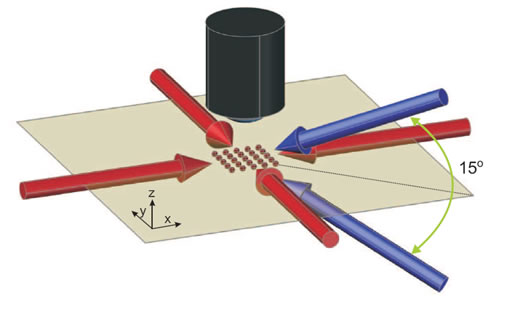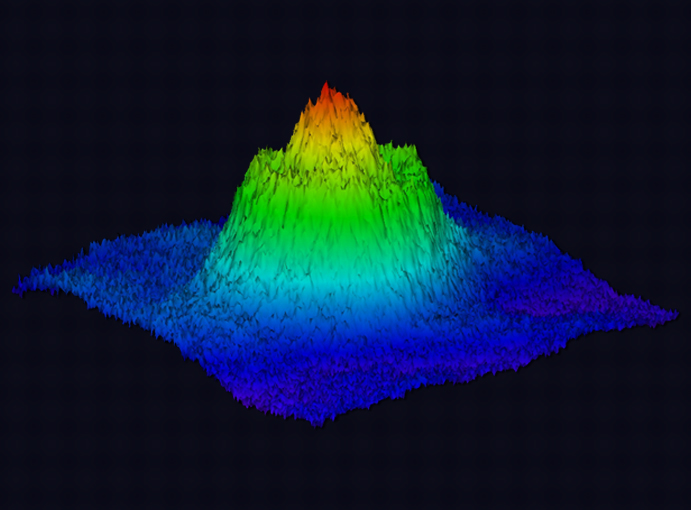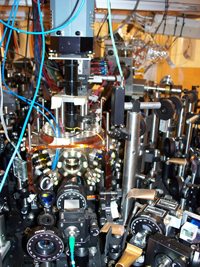Tunable Atomic and Molecular Quantum Gases in Optical Lattices
2009 - In situ Observation of incompressible Mott-insulating domains in ultracold atomic gases
N. Gemelke, X. Zhang, C.-L. Hung, C. Chin Nature 460, 995 (2009)
Near absolute zero temperature, quantum fluctuations can drive a phase transition in the many-body ground state of the system. A prominent example of such a quantum phase transition is the change from a superfluid (SF) to a Mott-insulating (MI) phase in a system of repulsively interacting bosons in a lattice potential.
Competing orders in the quantum many-body ground state:
Superfluid at low lattice depth: delocalized atomic wavefunction (Kinetic energy dominates)
|
Mott Insulator at high lattice depth: integer number of atoms per site (Interaction energy dominates)
|
|
|
|
 |
|
In this paper, we prepare a sample of N=7500 BEC atoms at scattering length a=310a0. When the lattice depth is gradually ramped up, we observe the following regimes:
A: Superfluid
B: Phase transition regime
C: Mott insulator
Density plateau identify the emergence of a Mott-insulting domain.
|
How to realize it?
 |
|
We use a pair of laser beams to form a deep vertical lattice potential and freeze the atomic motion in the vertical direction into the harmonic ground state of one single lattice site, making the sample effectively two-dimensional. Then we use two pairs of laser beams to form standing waves in the horizontal plane which create a two dimensional suqare lattice potential. By increasing the depth of this square lattice potential beyond a critical value, we induce the superfluid to Mott insulator transition. We then use absorption imaging and high resolution microscope objective to probe the in situ atomic density.
|
More fun images...

|
|
The apparatus:

|





